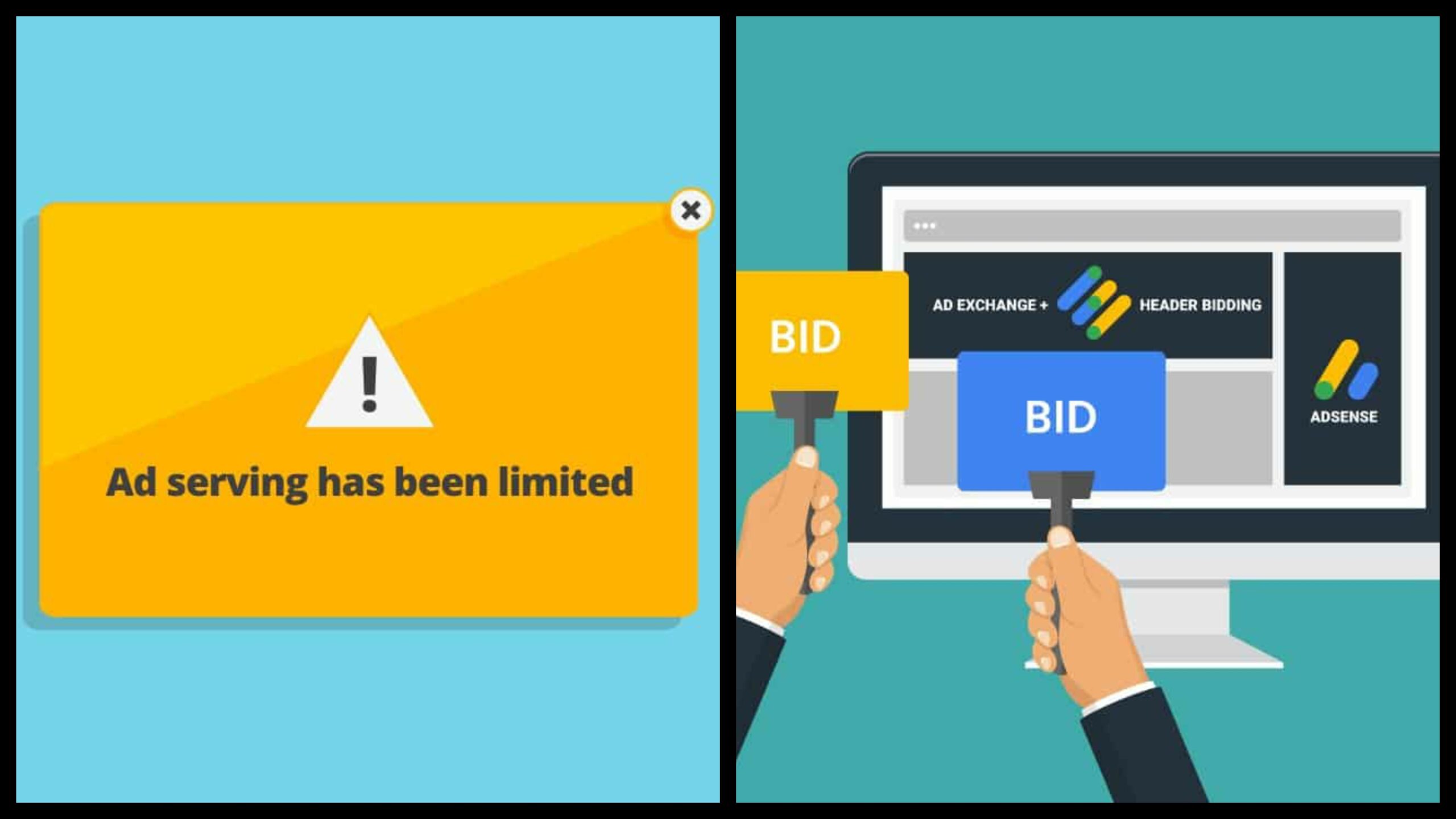
HOW CAN ADSENSE FIX LIMITS ON AD SERVING?
AdSense is likely a component of your ad stack if you use display ads to monetize your website. AdSense is frequently the only ad network that many new publishers use. The majority of people find it a nightmare that AdSense restricts their ad serving. It basically means that you can’t maximize your AdSense ad revenue potential because your monetization efforts are limited.
We’ll go into greater detail about AdSense ad serving limitations, the reasons why Google allows them, the various classifications, how to circumvent them, and more in this post.
Do you want to maximize your AdSense account? Here, you can access our AdSense training course.
Google restricts ad serving for a reason.
Google restricts the serving of ads to safeguard the user experience and ensure that advertisers do not overburden users with advertisements. A website with too many ads may load slowly and be difficult to use, causing users to leave and not return. Limiting ad serving can also help advertisers ensure that they are getting the most out of their advertising dollars by preventing them from overspending on impressions.

Does restricted promotion serving influence Promotion Trade as well as AdSense?
AdSense and Ad Exchange can both be affected by limited ad serving. Ad Exchange is a website and app advertising marketplace that makes use of the same ad serving technology as AdSense. Thusly, similar impediments on promotion serving that apply to AdSense likewise apply to Advertisement Trade. This intends that if a promotion unit on a site or application has arrived at its everyday impression limit, it won’t be qualified to get additional impressions until the following day. Your ads’ performance on both AdSense and Ad Exchange may suffer as a result.
Will AdSense’s ad serving limits be lifted if all ad units are recreated after being deleted?
AdSense’s ad serving limits will not necessarily disappear if all ad units are deleted and recreated. The number of impressions an ad unit has received is what sets ad serving limits, not the ad unit itself. Thusly, regardless of whether you erase all of your promotion units and make new ones, they will in any case be dependent upon a similar promotion serving limits as the old promotion units in the event that they are shown on similar pages and get similar number of impressions.
How long does it take to remove AdSense’s limitations on ad serving?
AdSense ad serving limits can be removed in a variety of ways, depending on what caused them and how you fix them. AdSense’s Ad Balance feature can be used to more evenly distribute impressions among your ad units, which can help you quickly overcome ad serving limits by distributing your ad units across all of your website’s pages. Ad serving limits may take longer to resolve in other circumstances, particularly if you need to make significant adjustments to your ad setup or if your website receives a lot of traffic. In the end, the time it takes to remove AdSense’s ad serving limits will vary based on your particular circumstance.
Limits on ad serving vary by type.
Have you ever wondered why Google might restrict the number of ads that can be displayed on your AdSense account? It all boils down to how trustworthy their ad network is. They want to keep publisher relationships intact, safeguard users from negative user experiences, and shield advertisers from fraud. Ad serving limits can frequently be temporary until particular issues with traffic quality are resolved. There are currently two distinct ad serving limits:
Account is being evaluated.
AdSense is busy evaluating the quality of your traffic at this limit. Frequently, there is no set amount of time to wait before limits are lifted. As they acquire additional information regarding the quality of your traffic, they will automatically review it and adjust the limit.
Invalid concerns about traffic.
Your account is being restricted because Google’s systems have detected some invalid traffic concerns, which is very similar to the situation described above. Again, as they learn more about the quality of your traffic, they will automatically review it and adjust the limit.
What exactly is invalid traffic? Various sorts of invalid traffic exist, however by and large, traffic’s created by bots that then, at that point, click on your AdSense promotions. It can also include click farms and accidental clicks.
You can try one of the following solutions to resolve this issue:
1- Distribute your ad units evenly across all of your website’s pages. This will reduce the likelihood of any one ad unit exceeding its daily impression limit and ensure that each ad unit has the same chance of being displayed.
2-To better distribute impressions among your ad units, make use of AdSense’s “Ad Balance” feature. You can limit the number of impressions that each ad unit can receive per day with Ad Balance. By drawing this line, you can guarantee that no single promotion unit arrives at its everyday impression cutoff and that your advertisements are appropriated uniformly across your site.
3-Check the performance of your ad units and make any necessary adjustments to their settings by utilizing AdSense’s “Ad Review Center.” You can see which ad units are working well and which ones might need to be changed to make them work better by using the Ad Review Center.
4-Don’t put your ad units on pages with a lot of traffic or no content at all. Pages with a lot of traffic can make it faster for ad units to reach their daily impression limit, while pages with little or no content may not give users a good experience and may not get many impressions for your ads.
Then shift your focus to irrelevant traffic issues. If you received an “Invalid traffic concerns” limit, this part is obvious. It’s also a good choice for publishers who want to keep their AdSense accounts safe from spam.
You shouldn’t play around with AdSense because invalid traffic frequently results in account bans. You want to keep your website away from any unreliable traffic.



Leave a Reply